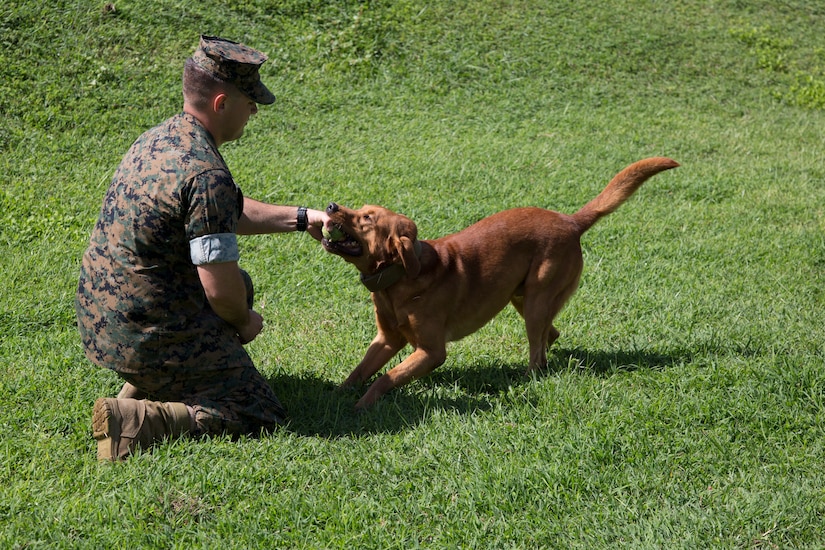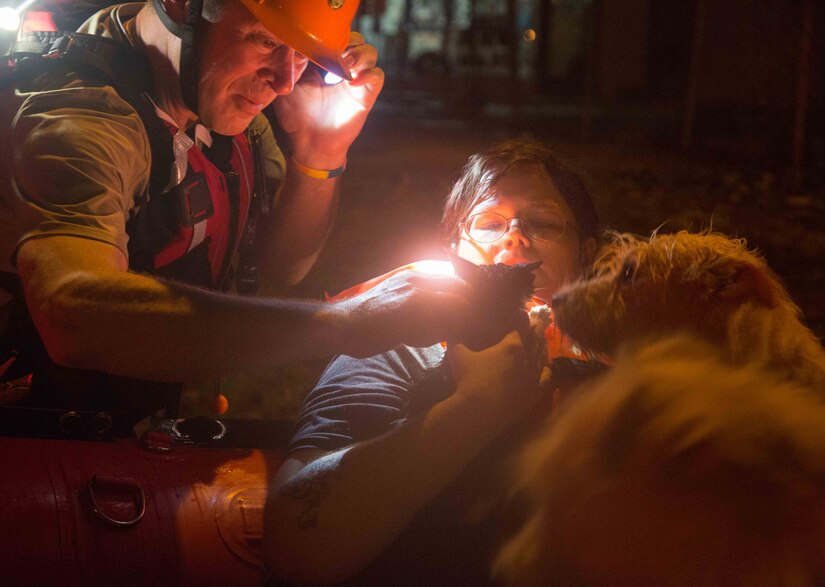By Marine Corps Lance Cpl. Kelcey Seymour, Marine Corps
Installations Pacific
CAMP HANSEN, OKINAWA, Japan – Military working dog Gage and
Cpl. Alex Marquissee play with a tennis ball Aug. 31 at the kennels on Camp
Hansen, Okinawa, Japan.
Military police officers have many conditions they have to
fulfill to effectively complete the mission of prevention and protection in
peace and wartime. One aspect of their duty is to be handlers for the military
working dogs.
“To even have the opportunity to be a military working dog
handler, you have to be military police by trade,” said Marine Corps Cpl.
Hunter Gullick, a military working dog handler with Headquarters and Support
Battalion, Marine Corps Installations Pacific at Marine Corps Base Camp Butler,
Japan.
“We go to the school at Fort Leonard Wood [Missouri] for
roughly three months before graduating and joining the fleet. After that you
can put a package in to request the chance,” he said. “This process is long
since they screen you with background checks, schooling history and
recommendations. If they accept you, you are sent to Lackland Air Force Base in
Texas for another three months of school, this time strictly for military
working dog handler training.”
Long Tradition
The tradition of using dogs during war dates back thousands
of years, but the U.S. military did not officially have military working dogs
until World War I. Since that time the partnership between the canines and
their human has grown.
“We utilize the dogs for a number of thing,” said Marine
Corps Cpl. Garrett Impola, a military working dog handler with Headquarters and
Support Battalion, MCIPAC. “The dogs are trained for substance location,
tracking, and explosive device detection. During festivals and events we use
them as security to do sweeps and to detrude conflicts. No other single MOS can
do everything our dogs can.”
The handlers spend most of their working days with their
partners to keep at top performance. This can be both a struggle -- as much as
it is a joy -- for the Marine partner.
“The best part about my job is the dogs, for sure,” Gullick
said. “They give everything they have to you, so we give everything to them in
return. The most challenging aspect of my job would be that sometimes the dogs
are like kids. It can get frustrating, so you have to have patience. You also
have to be humble because as a handler you have to be able to take constructive
criticism.”
The Marine and military working dog are a team. The job of
being a handler is always a work in progress. Marines are encouraged to push
their limits and learn more when it comes to doing their jobs. They are always
learning new techniques and procedures when it comes to performing their job to
the best of their abilities.
“You will never know everything because each dog is
different,” Gullick said. “With one, you think that you have the dog world
figured out and then another one comes along and throws a curveball at you. You
have to continually learn and adapt.”









